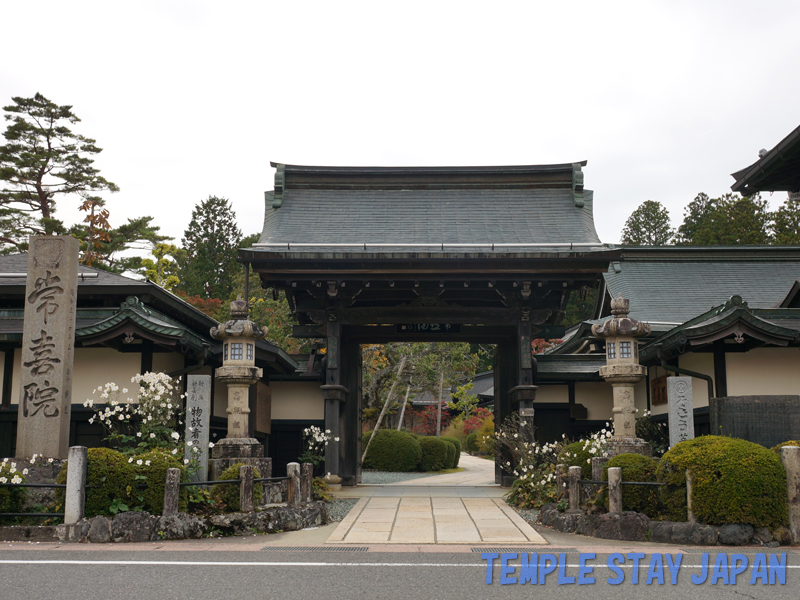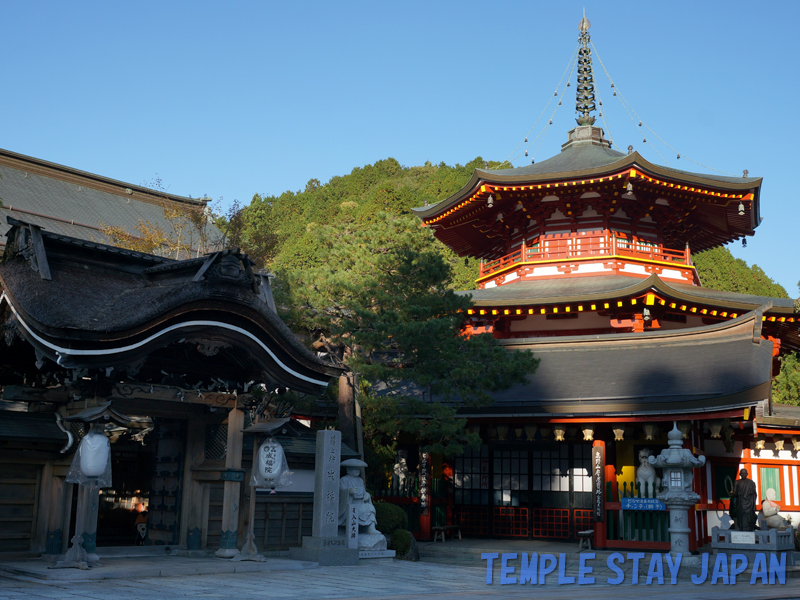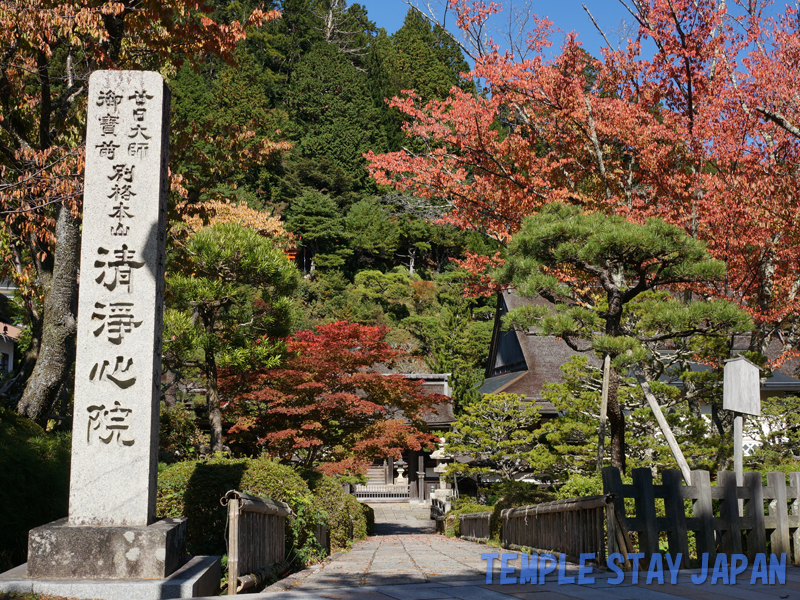Kansai– category –
-

Rengezyoin temple stay (Wakayama)
This is the shukubo where Yukimura Sanada lived with his family. Sanada was a warrior who played an important role in the Battle in Sekigahara and Summer and Winter Battles in Osaka, which became turning points in Japanese history. During the meal, student priests from Koyasan High School and University wait on you. -

Daienin temple stay (Wakayama)
They serve shojin vegetarian cuisine. They have a morning service. This shukubo has the sad love-story of Takiguchi Nyudo and Yokobue. The “Uguisu-no-Ido” (Nightingale’s well) and “Uguisu-no-Ume” (Nightingale’s plum) related to this sad story still remain in the garden. -

Ekoin temple stay (Wakayama)
The Shojin cuisine served in the room was really delicious. Compared with the shukubo that I stayed at on the previous day, this place was larger in scale. In terms of accommodation facilities, it was more sophisticated. Only people who wished to participated in the morning service at the main hall from 6:30. -

Fukuchiin temple stay (Wakayama)
This shukubo is famous for a garden that is adjacent to the building. So, you are able to fully appreciate it even walking through the corridor. In a special room, Chikurin Yukaku-zu painted by Tanyu Kano is displayed. You are able to see this exquisite cultural asset up close. -

Jyokiin temple stay (Wakayama)
You can experience training. The training includes sutra chanting, shakyo (copying sutra by hand), shabutsu (copying images of Buddha by hand), zazen (meditation) and cleaning (of the garden, the corridors and the rooms). They serve shojin vegetarian cuisine. -

Jyofukuin temple stay (Wakayama)
What was most appreciated was the consideration of the priests working at the shukubo. When we arrived at the shukubo, we were guided to the room and tea was served. While we were drinking tea, the shukubo staff gave us some recent information on Mount Koya. -

Hensyokoin temple stay (Wakayama)
It was founded by Priest Kobo and was once a residence of the former Emperor Shirakawa. They serve shojin vegetarian cuisine. They conduct religious services early in the morning. Also, there are many cultural assets, including the sliding door picture painted by Ikeno Taiga. -

Syojoshinin temple stay (Wakayama)
Syojoshinin is located by the entrance of the approach to the back of the temple. It has a very nice appearance. In the morning service, they chant a sutra with unique tones, which was very interesting. After the service, they let us see a hidden Buddha image. They say that it is a privilege for the shukubo guests only. -

Hozenin temple stay (Wakayama)
The garden is said to be made of Enshu Kobori. It is the oldest Tsuru-Kame type garden (whose pond has two islands; one for a turtle and the other for a crane) on Mount Koya. The menu includes Mount Koya's special shojin vegetarian cuisine, Iroha plates unique to Hozen-in and sesame tofu, their specialty. -

Muryokoin temple stay (Wakayama)
This shukubo features a full-fledged morning service and quiet time because they do not have TVs in the guestrooms. The head priest gave his lecture in English. There was also a nun who had a good command of English. It seems that they are used to foreign visitors.










